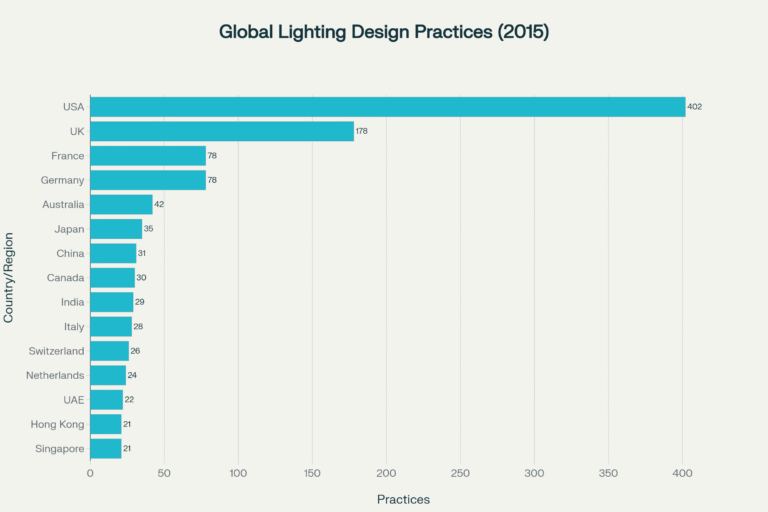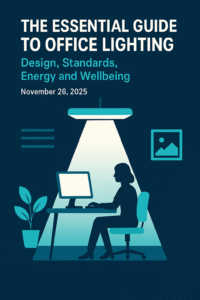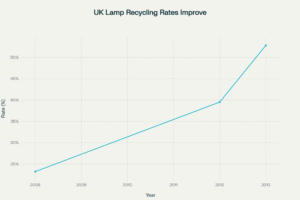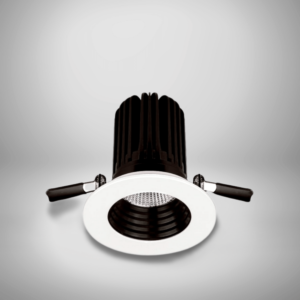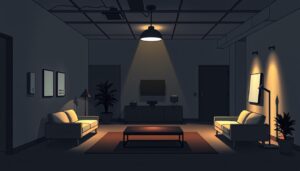Lighting design isn’t just about making sure we can see anymore—it’s about how spaces make us feel, work, and connect.
What was once purely functional has become a creative and technical art form, driving huge growth across industries and redefining the way we experience the built environment.
Growth of Lighting Design Practices (2015-2025)
Lighting Design Practices Are Multiplying Worldwide
A decade ago, there were roughly 1,300 specialised lighting design studios globally.
Fast-forward to 2026, and that number has more than doubled to nearly 2,700 practices — a clear reflection of how much the profession has expanded and diversified.
The United States and the United Kingdom remain key hubs, but Asia and Europe are rapidly catching up as the demand for specialised lighting grows in tandem with urbanisation and green building initiatives.
Global LED Lighting Growth (2015–2025)
LEDs: Adoption Continues to Climb
Few things have shaped the lighting industry like the LED revolution. LEDs already represent more than 60% of all global lighting installations, with projections showing they will reach nearly 90% by 2030.
This isn’t simply led by saving energy (though LEDs use up to 90% less electricity than traditional bulbs)—it’s about enabling designers to craft flexible, dynamic lighting environments tailored precisely to human needs.
Commercial LED adoption is pacing ahead of residential, expected to hit an astonishing 92% by 2030, driven by both cost savings and corporate sustainability goals.
The Smart Lighting Revolution
The smart lighting market is growing at a breakneck pace — about 22% per year — and set to reach over $136 billion by 2033. Thanks to IoT, AI and sensor integration, lighting systems can now adapt intelligently to presence, daylight levels, and personal preferences, blurring the lines between technology, style, and wellness.
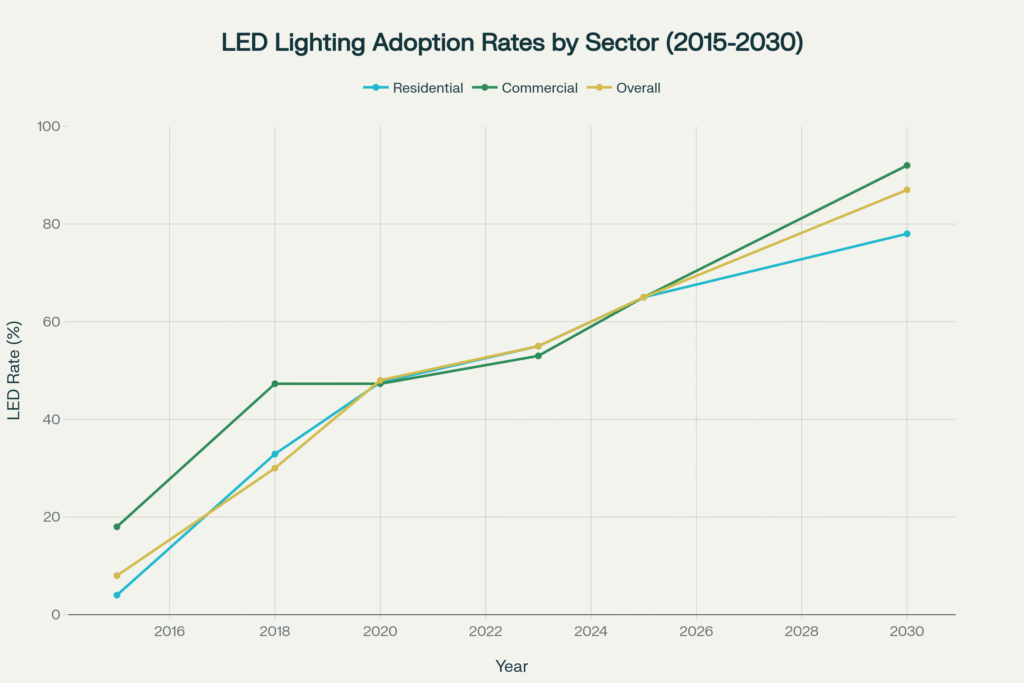
Where in the World is Lighting Design Growing Fastest?
Geographically, the lighting market is led by Asia Pacific, holding nearly 47.4% of the global share in 2024 — fuelled by massive urban growth and infrastructure investment. North America and Europe follow with 28.5% and 18.2%, respectively, focusing on smart cities and sustainability.
This geographic growth mirrors the increasing global emphasis on lighting as a tool for sustainability, wellness, and cultural expression
What This Means for Lighting Designers
With increased demand, growth in industry scope, and technology innovations comes opportunity — and responsibility.
Lighting designers are now expected to be multidisciplinary consultants with expertise in architecture, engineering, human health, and digital controls.
The profession is expanding rapidly — especially between 2024 and 2030, employment growth is expected to exceed 10%.
Salaries remain competitive, with U.S. lighting designers earning around $53,000 on average, and upwards of £59,000 in senior UK roles.
The growth of lighting design is a signal — for designers, manufacturers, and clients — that lighting is no longer an afterthought but a strategic part of every project.
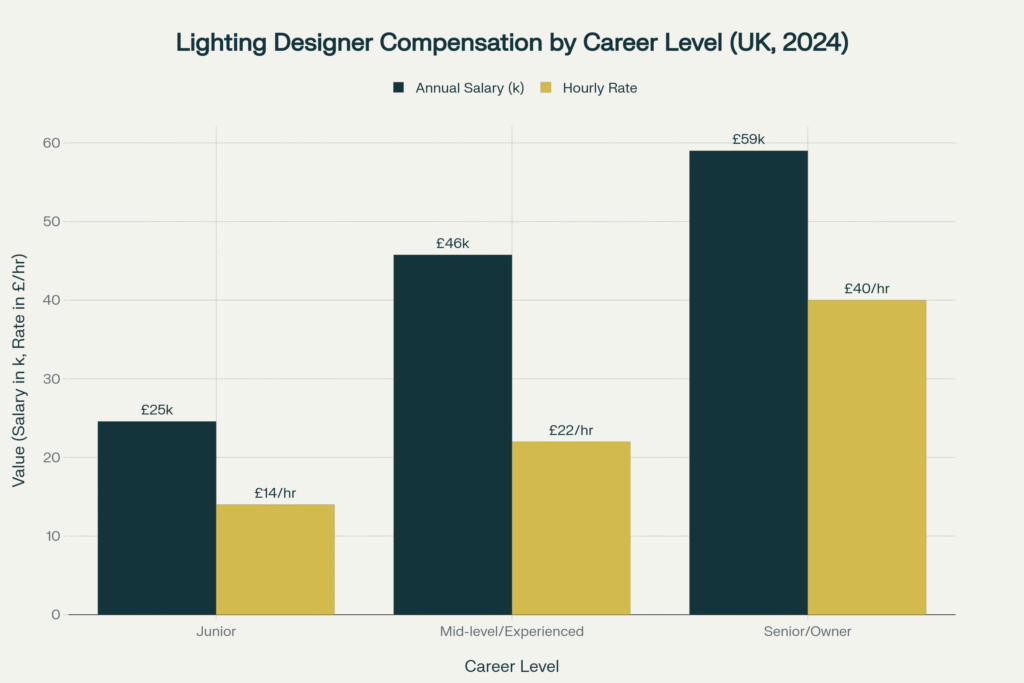
How Much are Lighting Designers Paid?
Lighting designers’ pay varies a lot depending on where they work, what sector they’re in, and whether they’re salaried or freelance.
For employed roles in the UK you’ll commonly see salaries clustered between roughly £22k and £38k, with multiple salary sites reporting averages in the high £20ks to mid £30ks — smaller practices and entry-level roles sit at the lower end, while established studio posts tend toward the higher end.
Senior lighting designers, technical leads and heads of studio command noticeably more — it’s not unusual for experienced specialists or those managing teams and large projects to push into the £40k–£50k+ bracket, especially where a role combines design leadership with project management or client-facing responsibilities. Different sources report a spread at the top end of the market reflecting specialisms and employer type.
Freelance rates are even more variable and very sector-specific.
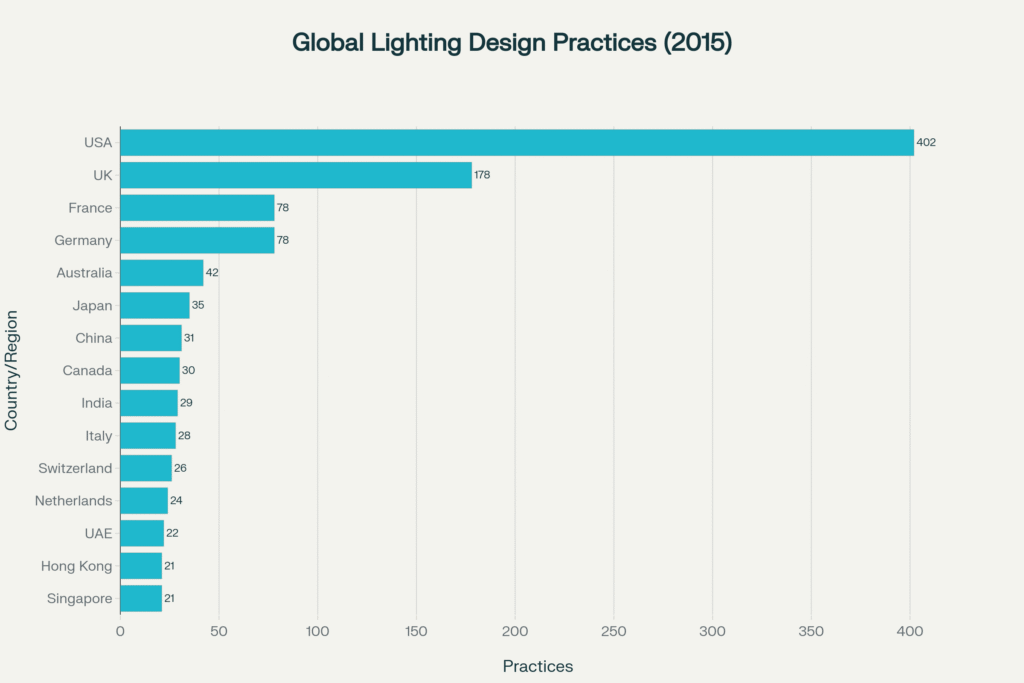
The Bright Future Awaits
We’re at a turning point where lighting design blends creativity, cutting-edge tech, and sustainable thinking in exciting new ways. The growth of lighting design is not just about numbers or markets — it’s about crafting environments that feel alive, work smarter, and lift human spirit.
For Lumenloop, this means continuing to innovate with luminaires that are not only efficient but inspiring — lighting the way to well-being and bold new design horizons.
Talk to a lighting expert today for a free consultation.
